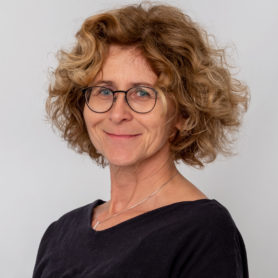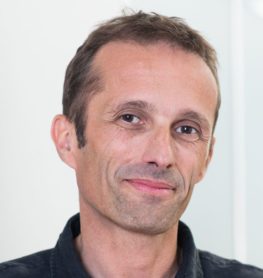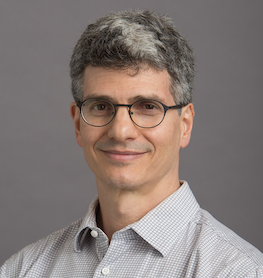Gabriele Steidl
Professor at the Department of Mathematics at the TU Berlin
Generative Neural Networks via Markov Chains

Abstract
Normalizing flows, diffusion normalizing flows and variational autoencoders are powerful generative models. This talk gives a unified framework to handle these approaches via Markov chains. We model stochastic normalizing flows as a pair of Markov chains fulfilling some properties and show how many state-of-the-art models for data generation fit into this framework. Indeed including stochastic layers improves the expressivity of the network and allows for generating multimodal distributions from unimodal ones. The Markov chains point of view enables us to combine both deterministic layers as invertible neural networks and stochastic layers as Metropolis-Hasting layers, Langevin layers, variational autoencoders and diffusion normalizing flows in a mathematically sound way.
Biography
Gabriele Steidl received her PhD and habilitation (postdoctoral lecturing qualification) in mathematics from the University of Rostock (Germany). She held a position as an Assistant Professor at the TU Darmstadt (Germany, 1993-1996) and as a Full Professor at the University of Mannheim (Germany, 1996-2010). From 2011 to 2020, she was a Professor at the TU Kaiserslautern (Germany) and a consultant of the Fraunhofer Institute for Industrial Mathematics. Since 2020, she has been a Professor at the Department of Mathematics at the TU Berlin. She worked as a postdoc at the University of Debrecen (Hungary), the University of Zürich and was a Visiting Professor at the ENS Paris/Cachan, the Universitè Paris East Marne-la-Vallèe and the Sorbonne. Since 2020, she has been a member of the “Fachkollegium Mathematik” of the German Research Foundation. She is the Program Director of SIAG-IS (SIAM), on the executive board of the MATH+ Excellence Cluster (Berlin) and serves in the Scientific Advisory Committee of the Helmholtz Association. Starting in 2022, she will be working as Editor-in-Chief of the SIAM Journal of Imaging Sciences. Further, she is a member of the editorial board of the “Journal of Mathematical Imaging and Vision”, the “Journal of Fourier Analysis, Inverse Problems and Imaging” and the “Journal of Optimization Theory and Applications, Numerical Functional Analysis and Optimization, Transactions in Mathematics and its Applications and Acta Applicandae Mathematicae”.
Patrick Pérez
Scientific Director of valeo.ai
From sensing to understanding a wild world

Abstract
With the fast progress of machine learning, autonomous systems that can operate safely in the wild seem in reach. Yet, the road remains crammed with major challenges regarding life-time performance, robustness and reliability, data availability, model interpretability, among others. With examples from the automatisation of road-vehicle driving, where multi-modal sensing aims at building a thorough understanding of the surrounding world in order to forecast and act, this presentation will discuss these challenges and promising research efforts toward solving them.
Biography
Patrick Pérez received the Ph.D. degree in 1993, for his work on multi-grid Markov random fields. After a postdoc at the Dept of Applied Mathematics of Brown University, he joined Inria in 1994 as a full time researcher, to work on image and video analysis. From 2000 to 2004, he was with Microsoft Research Cambridge, working on image editing (notably exemplar-based inpainting and Poisson editing) and visual tracking with particle filters. He then returned to Inria as a senior researcher and took, in 2007, the direction of Vista, a research team focusing on video understanding. In 2009, Patrick Pérez joined Technicolor as a Distinguished Scientist, to lead an exploratory research program on computer vision and image analysis, with applications to visual effects and movie post-production. In 2018, he joined Valeo, a global automotive supplier to create and lead Valeo.ai. This research lab explores in particular the challenges of AI for assisted and autonomous driving: from perception to action, how to train, with limited supervision, multi-sensory models that are accurate, robust, reliable, adaptable, verifiable and interpretable?
Eero Simoncelli
Professor at New York University
Photographic Image Priors in the Era of Machine Learning
Abstract
Inverse problems in image processing and computer vision are often solved using prior probability densities, such as spectral or sparsity models. In recent years, machine learning has provided state-of-the-art solutions for most of these problems using artificial neural networks, which are typically optimized using nonlinear regression to provide direct solutions for each specific task. As such, the prior probabilities are implicit, and intertwined with the tasks for which they are optimized. I’ll examine some properties of priors implicitly embedded in denoising networks, and describe methods for drawing samples from them. Extensions of these sampling methods enable the use of the implicit prior to solve any deterministic linear inverse problem, with no additional training, thus extending the power of a supervised learning for denoising to a much broader set of problems. The method relies on minimal assumptions, exhibits robust convergence over a wide range of parameter choices, and achieves state-of-the-art levels of unsupervised performance for deblurring, super-resolution, and compressive sensing.
Biography
Eero Simoncelli is Silver Professor at New York University and the Director of the Center for Computational Neuroscience at the Flatiron Institute of the Simons Foundation. Simoncelli received his B.S. in physics (summa cum laude) in 1984 from Harvard University, studied applied mathematics at Cambridge University for a year and a half, and then received his M.S. in 1988 and his Ph.D. in 1993, both in electrical engineering from Massachusetts Institute of Technology. He was an assistant professor of computer and information science at the University of Pennsylvania from 1993 until 1996. He moved to New York University in September 1996, as an assistant professor of Neural Science and Mathematics (later adding psychology, and most recently, data science). Eero received an NSF CAREER award in 1996, an Alfred P. Sloan Research Fellowship in 1998, and was an Investigator of the Howard Hughes Medical Institute from 2000-2020. He was elected a Fellow of the IEEE in 2008, an associate member of the Canadian institute for Advanced Research in 2010, and was elected to the American Academy of Arts and Sciences in 2019. He has received two Outstanding Faculty awards from the NYU GSAS Graduate Student Council (2003/2011), two IEEE Best Journal Article awards (2009/2010) and a Sustained Impact Paper award (2016), an Emmy Award from the Academy of Television Arts and Sciences for a method of measuring the perceptual quality of images (2015), and the Golden Brain Award from the Minerva Foundation, for fundamental contributions to visual neuroscience (2017). His research interests span a wide range of topics in the representation and analysis of visual images, in both machine and biological systems.


